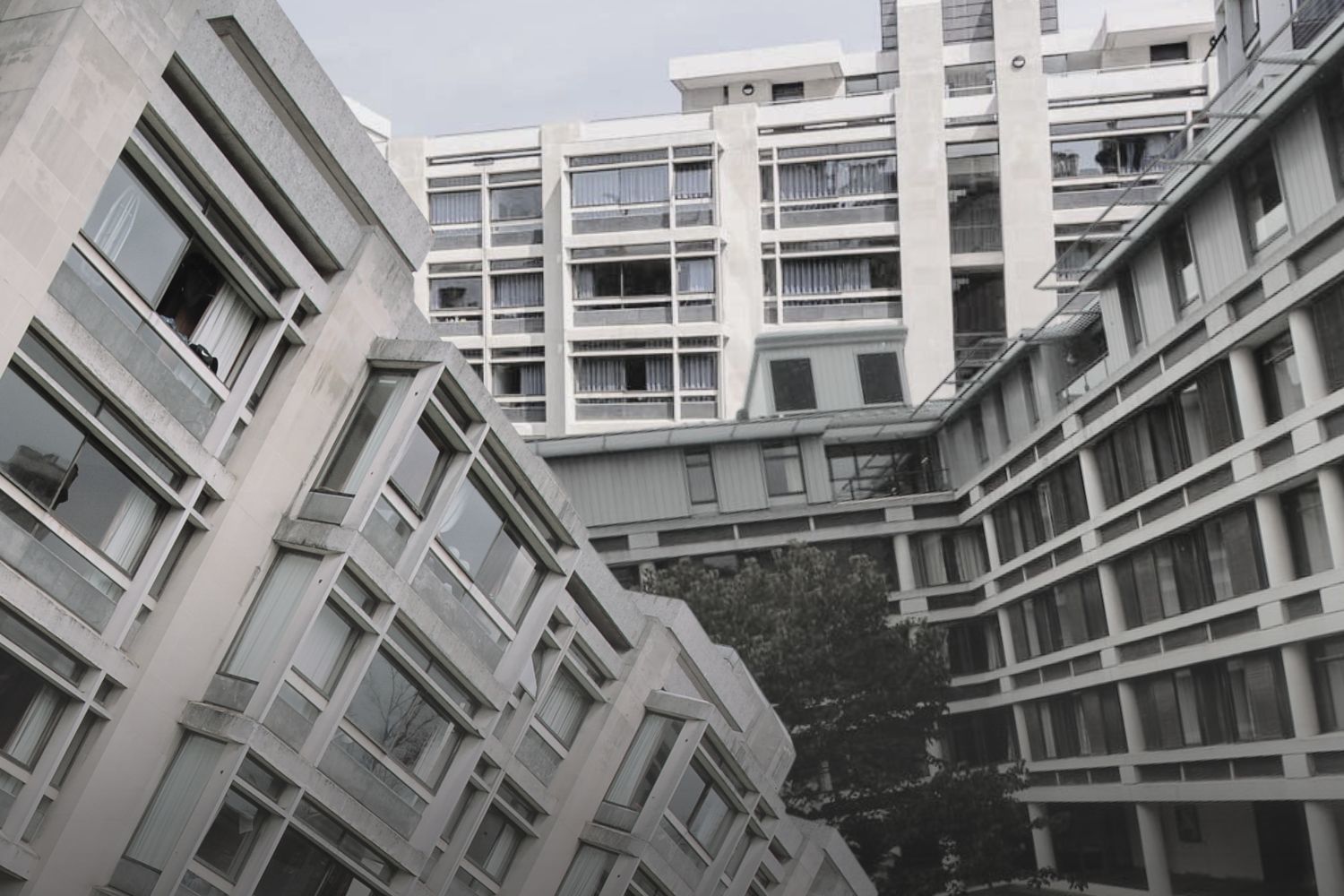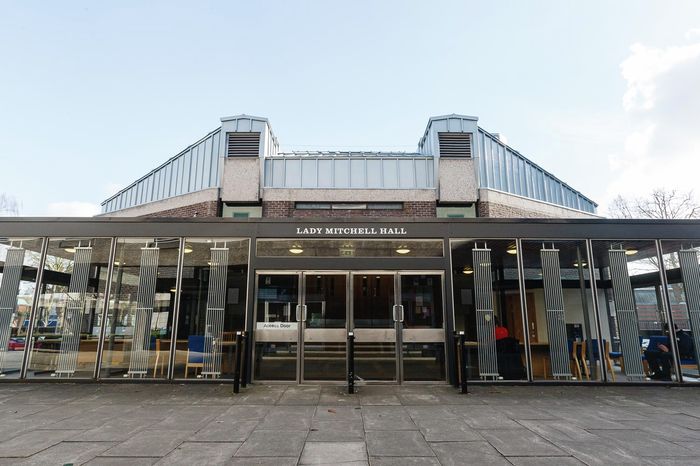A Queens’ student, a John’s student and a Christ’s student stand in front of Christ’s College’s Typewriter Building. The girl from Queens’ says it “looks like Cripps”. The boy from John’s agrees, and asks the girl when she had been into John’s. She is confused, and asks why he asks — and for that matter, when had he been into her college?
There are four Cripps developments in Cambridge, and only a vague visual style uniting them. Situations like my own described above are not so uncommon — so, what’s with all the Cripps Courts?
“Queens’ Cripps Court was proclaimed ‘the best piece of modern architecture by a British architect anywhere’”
The Cripps Building, St. John’s College, is the first funded by the Cripps Foundation in Cambridge. It was designed by Philip Powell and John Hidalgo Moya, whose namesake practice is central to postwar modernism. The finished building gets a writeup from Nikolaus Pevsner, the biggest name in English architectural writing, and a Fellow at St. John’s, as “masterful”, a building of “great intensity” whose quality of “surprise” at the end of the John’s court system is “supreme” and whose roof “succeeds splendidly”. High praise. He devotes a page and a half besides in the Cambridgeshire edition of The Buildings of England to the Cripps Building — all of Sidney Sussex College takes him less than three. Some of this enthusiasm may be chalked up to one fact absent from his write-up; he had picked the building’s design.
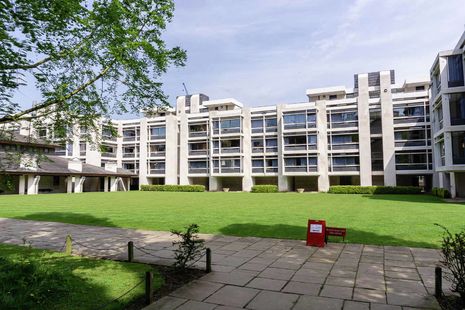
In this way, his feeling that it “shuns all excesses” and expresses “ingeniousness and sensitivity” in no small part reflects his feelings about his own austere, sensitive ingenuity. When it comes to cultivating prestige, it is surely an advantage to have the nation’s dominant architectural historian involved in a building from its inception, and does no harm if he happens to open his curtains to it each morning from his rooms in New Court. The project was a great success.
The Cripps Building, St. John’s, was finished in 1967. In 1968, Humphrey Cripps was seated beside the President of Queens’, Arthur Armitage, at dinner. The two men got along, and Powell & Moya, at this point an institution in themselves, started design work on a new Cripps building the following year: to be built on Queens’ Backs. It was finally completed in 1983, but even the initial stages of its building were lauded: Steven Gardiner wrote for The Observer that it is “the best piece of modern architecture by a British architect anywhere”.
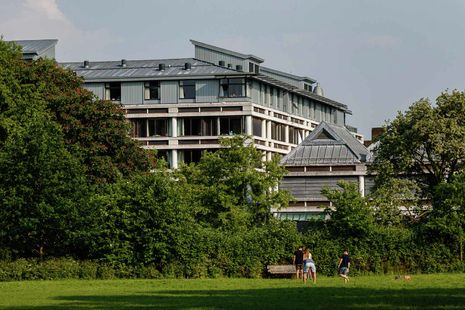
Writing for the Twentieth Century Society, Kenneth Powell (of no relation to Phillip) wouldn’t even call it the best piece of modern architecture by a man named Hidalgo within 600 yards. Their competition notwithstanding, the two buildings, unified by patron, architects, and location on The Backs, present a cohesive view of a postwar British educational establishment. While an enclosed courtyard rather than the single block of St John’s, this newer building took its lead from its older sibling in many ways. There is a trace of the British past — Powell & Moya use the same Portland stone favoured by Christopher Wren and Inigo Jones, and Cripps Court is firmly Cambridge in its colonnaded lawn — but there are also the marks of Gropius and Le Corbusier in the white concrete, cylindrical columns, large windows and brick-stone integration. A tough act to follow.
“The Cripps foundation has always been willing to take a risk with fashion”
Though the Cripps family gave many grants, the next namesake project in Cambridge was Selwyn’s Cripps Court. The third development in the 1960s, it attempts to carry forward the momentum of Powell & Moya’s triumphs. The family awards the contract to Gordon Woolatt, an architect from their hometown of Nottingham, and he produces a residential building that combines modernist affect with historical context. Some of his models remain in Selwyn College’s archives. Style is also carried forward directly from Powell & Moya — red bricks tie it to the rest of Selwyn, and the white concrete Corbusier-inflected pilasters tie it together with the other Cripps developments: for all this, it is a worse building. Wide critical acclaim was notably absent this time around.
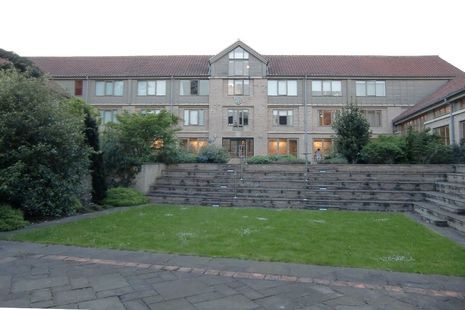
Magdalene’s Cripps Court is the most recent of the developments, and a project of Freeland Rees Roberts, a Cambridge darling firm responsible for Queens’ Porter’s Lodge, the Jerwood Library in Trinity Hall, Pembroke Library and, perhaps most emblematic of their deep establishment, the upkeep of King’s College Chapel until 2017. The safest hands imaginable for a Cambridge development. It went well, but is unlike the others in its style, looking instead like a hotchpotch of every charmingly rendered upscale development in England. Airy timberwork roof over clean, multileveled hard landscaping. The decision to call it Cripps Court seems a practical joke, or a reach toward an evaporated brand identity — while there are certainly some white concrete columns gesturing toward Pevsner’s 60s ideals, Magdalene’s Cripps is sleek and totally 21st century, bridging the space between preexisting Victorian houses with a conference centre. A soft cry goes up, then: Why pose an unnecessary difficulty to Google Maps? What is gained?
To make this apparently incongruous Cripps Court cohere, look to the Foundation’s origins in Nottingham. Before Cambridge, the Foundation funded an enormous anachronism by Donald McMorran: Nottingham’s Cripps Hall hasa Georgian winged floorplan, a Renaissance dining hall, and enormous concrete columns with wreathed Ionic capitals holding up a red-brick roof with a clocktower; it opened the same year as Lloyd Wright’s Guggenheim. The Cripps foundation has always been willing to take a risk with fashion, and experimentation has historically paid off — one generation on, the same arch-traditionalist McMorran give the huge Golden Lane project to Geoffry Powell (again, no relation), a contemporary and Architectural Association classmate of Powell and Moya (of Powell & Moya), giving birth to a new British Modernism. Geoffry Powell would, in no small part due to McMorran’s initial co-sign, design Murray Edwards and the Barbican, and Powell & Moya (the very same) then continue McMorran’s work with the same Foundation. The unifying principle, then, after Selwyn’s court knocked the wind from Cripps in Cambridge for five decades, is philanthropic rather than aesthetic.
This is all to say that if you ever find yourself in a situation like my own in the shadow of the Typewriter, you can now feel prepared to comprehensively inform, correct, nay, educate, whichever helpless wight stands before you.

